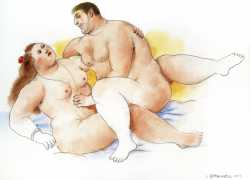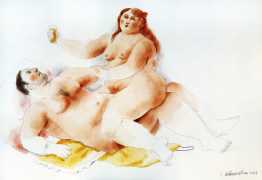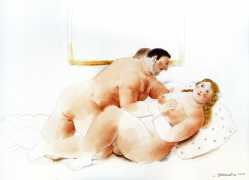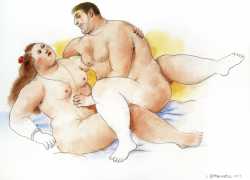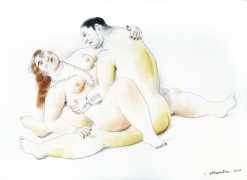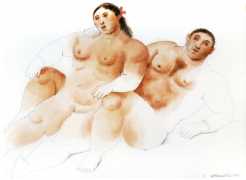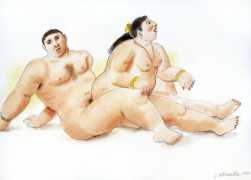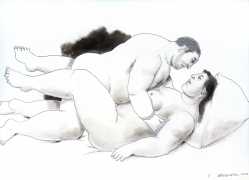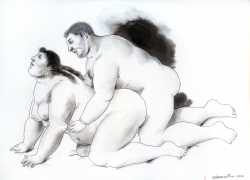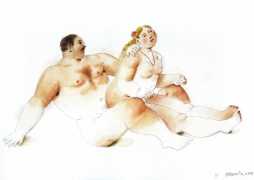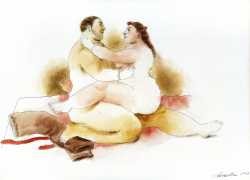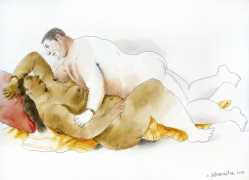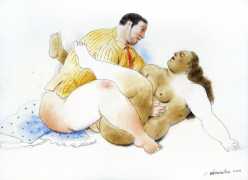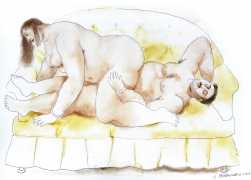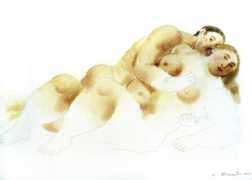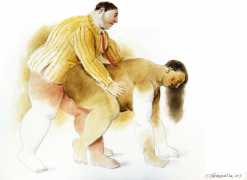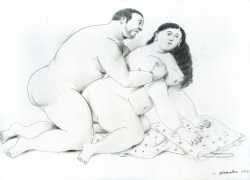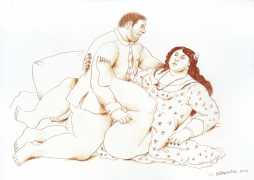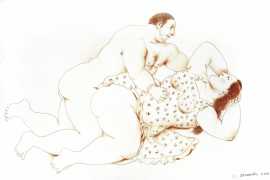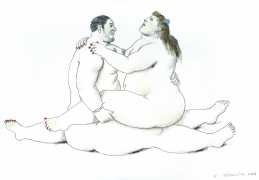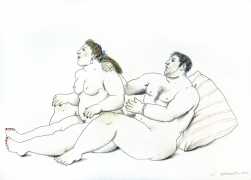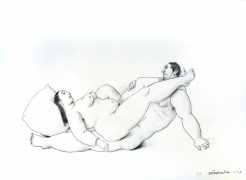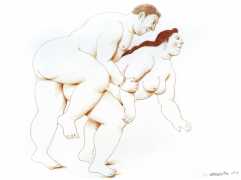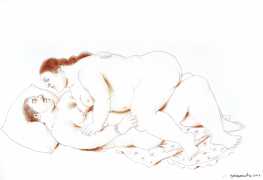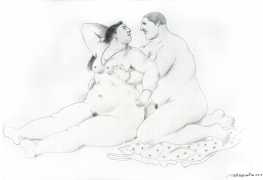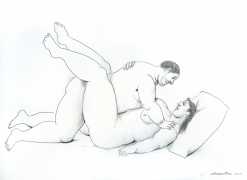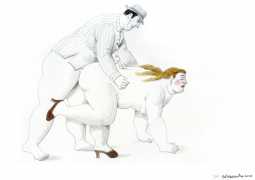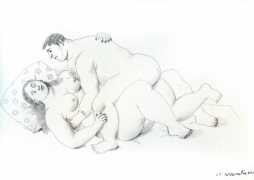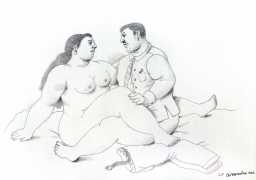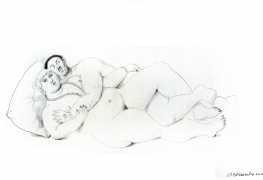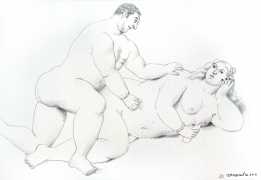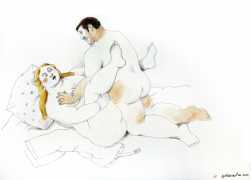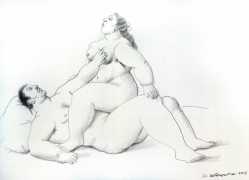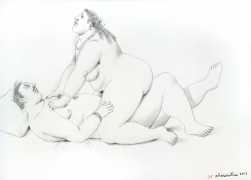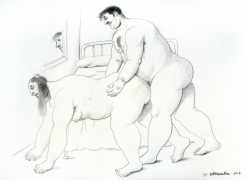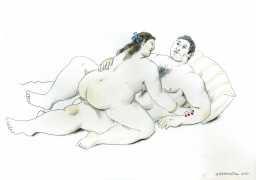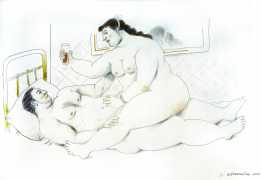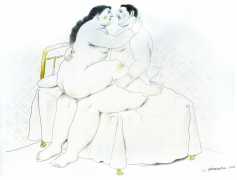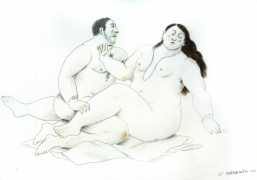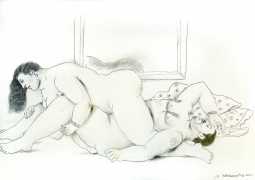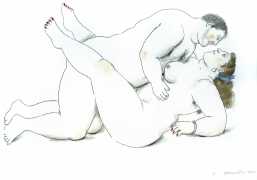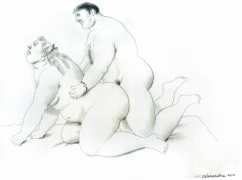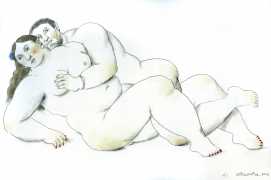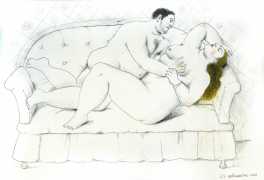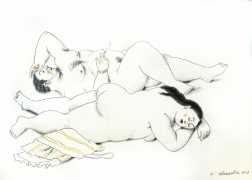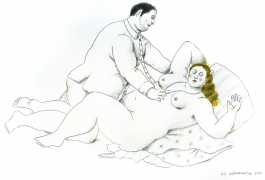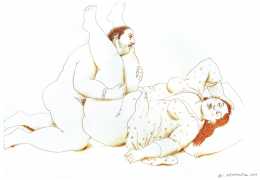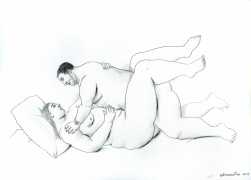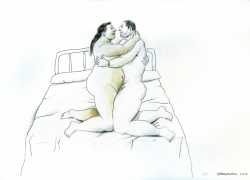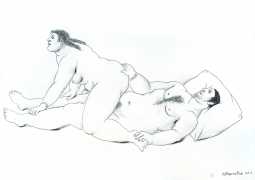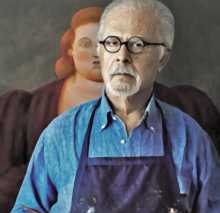 Known internationally for his trademark ‘Boterismo’, featuring plus-size people often representing a social and political take on human activity, the Colombian figurative artist and sculptor Fernando Botero Angulo grew up in Medellín. He received his primary education in Antioquia Ateneo and, thanks to a scholarship, he continued his secondary education at the Jesuit School of Bolívar. In 1944 his uncle sent him to a school for matadors, then in 1948, at the age of sixteen, Botero had his first illustrations published in the Sunday supplement of El Colombiano, one of the most important newspapers in Medellín. He used the money he was paid to attend high school at the Liceo de Marinilla de Antioquia.
Known internationally for his trademark ‘Boterismo’, featuring plus-size people often representing a social and political take on human activity, the Colombian figurative artist and sculptor Fernando Botero Angulo grew up in Medellín. He received his primary education in Antioquia Ateneo and, thanks to a scholarship, he continued his secondary education at the Jesuit School of Bolívar. In 1944 his uncle sent him to a school for matadors, then in 1948, at the age of sixteen, Botero had his first illustrations published in the Sunday supplement of El Colombiano, one of the most important newspapers in Medellín. He used the money he was paid to attend high school at the Liceo de Marinilla de Antioquia.
Botero’s work was first exhibited in 1948 in a group show; his first solo exhibition was held at the Galería Leo Matiz in Bogotá. In 1952 Botero travelled with a group of artists to Barcelona, where he stayed briefly before moving on to Madrid. He came to national prominence when he won the first prize at the Salón de Artistas Colombianos in 1958. Botero began creating sculptures after moving to Paris in 1973, achieving international recognition with exhibitions across the world by the 1990s.
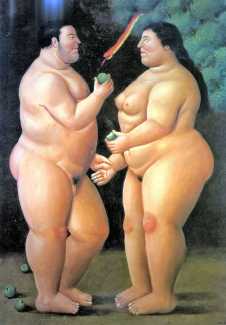
While his work includes still lifes and landscapes, Botero’s work has concentrated on the human figure, his paintings and sculptures united by their exaggerated proportions – ‘fat figures’ as Botero unashamedly refers to them himself. He explains this concentration on large people simply as a personal preference – ‘An artist is attracted to certain kinds of form without knowing why. One adopts a preference intuitively; only later does one attempt to rationalise or justify it.’ He leaves that to his critics, or whom there have been many.
Though he spends only a month a year in Colombia, he still considers himself ‘the most Colombian artist living’, distinguishing himself from the international trends of the art world. Since the turn of the millennium he has concentrated on series relating to specific themes. In 2004 he exhibited a series of 27 drawings and 23 paintings dealing with the violence in Colombia from 1999 through 2004. He donated the works to the National Museum of Colombia, where they were first exhibited.
In 2005 Botero gained considerable attention for his Abu Ghraib series, which was exhibited first in Europe. He based the works on reports of United States forces’ abuses of prisoners at Abu Ghraib prison during the Iraq War. He produced more than 85 paintings and 100 drawings in exploring this theme, ‘painting out the poison’ as he explained it. In 2008 he exhibited the works of his ‘Circus’ collection, featuring twenty works in oil and watercolour.
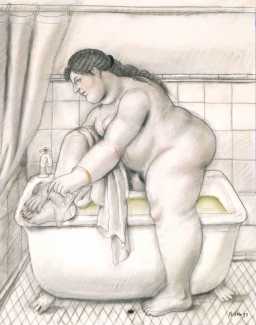
Botero has always been attracted to talented women, and after a five-year marriage in 1950 to the art director Gloria Zea (1935–2019, Director of the Museum of Modern Art in Bogotá from 1969 to 2016), with whom he had three children, was associated with a string of artistic women before settling down in 1974 with artist Cecilia Zambrano. Fernando and Cecilia had a son together, Pedro, but in 1979, after Fernando and Cecilia had separated and Fernando had married the Greek artist Sophia Vari in 1978, father and son were involved in a car accident in Spain in which Pedro was killed and Fernando injured. Botero and Vari now spend most of the time in Paris, but also have a house in Pietrasanta, north of Pisa in Italy.

